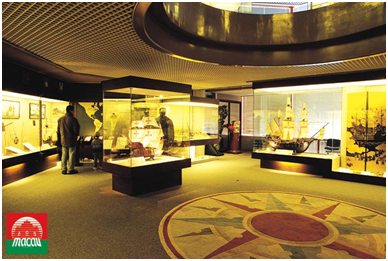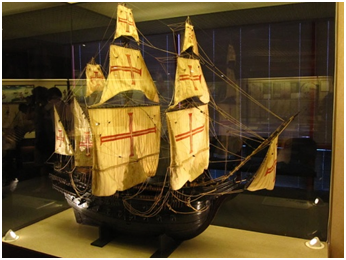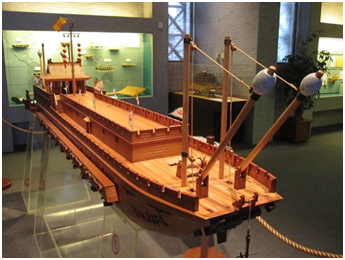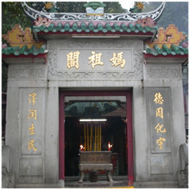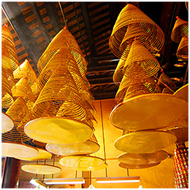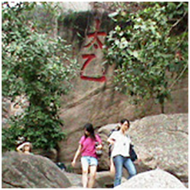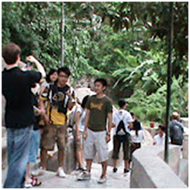Field Trips in Macau:
July 11 (Thursday)
Visit to Macau Museum
Introduction:
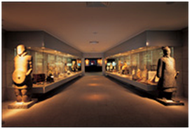 |
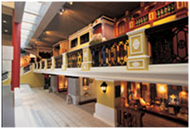 |
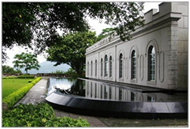 |
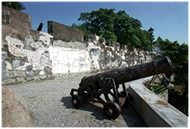 |
Macau Museum
Edited from (http://www.macaumuseum.gov.mo/w3ENG/w3MMabout/MuseumC.aspx)
The Macao Museum is located in Mount Fortress. It was built by the Jesuits in the 17th century, and opened on 18th April, 1998. The Fortress is adjacent to the Ruins of St. Paul’s and was the city’s principal military defence for almost three centuries. In 1965, the Fortress was converted into the former Meteorological Service. On 15th July, 2005, the Historic Centre of Macau was inscribed on the World Heritage List, and the Mount Fortress figures among the significant historical monuments of the Centre.
The Museum consists of two underground levels and a third located on the topmost level of the Fortress, where the former Meteorological Service was housed. The architectural character of the site and its particular configuration have been retained and preserved. The Museum is a space dedicated to the history and culture of Macau, possessed of a vast number of objects of historical and cultural value, which demonstrate the way of life of the various communities that have inhabited the city for centuries.
- First floor: Genesis of Macau Region
- Second floor: Popular Arts and Traditions in Macau
- Third floor: Contemporary Macau
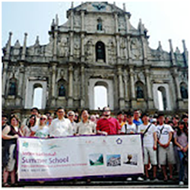 |
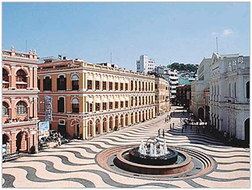 |
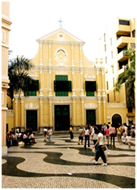 |
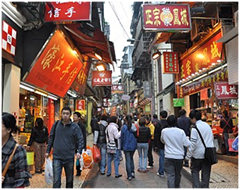 |
* The last photo is copied from the blog of CW's Food & Travel:
(http://cwfoodtravel.blogspot.com/2010/05/macau-snack-street-at-senado-square.html)
Historic Centre of Macau
Edited from (http://www.wh.mo/wh/mhValueE.asp)
‘The Historic Centre of Macau’ is the product of over 400 years of cultural exchange between the western world and Chinese civilization. The architectural heritage, predominantly European in nature, stands in the midst of traditional Chinese architecture in the historic settlement, providing contrast. ‘The Historic Centre of Macau’ is the oldest, the most complete and consolidated array of European architectural legacy standing intact on Chinese territory.
Gateway between East and West
The settlement of Macau by Portuguese navigators, in the mid-16th century laid the basis for nearly five centuries of uninterrupted contact between East and West. The origins of Macau’s development into an international trading port make it the single most consistent example of cultural interchange between Europe and Asia. ‘The Historic Centre of Macau’ coincides with the heart of the western settlement area, also known as the ‘Christian City’ in history.
The emergence of Macau with its dual function as a gateway into China, and as Ming China’s window onto the world, reflected a relaxation of certain restrictions combined with a degree of open-mindedness that offered a creative way to supplement China’s vassal-state trading system and marked a turning point in the history of both China and Europe. Macau, as the West’s first established gateway into China, was remarkable in setting off a succession of connections and contacts that progressively enriched both civilizations across a huge range of human endeavor, both tangible and intangible, at a critical point in history.
For almost three centuries, until the colonization of Hong Kong in 1842, Macau’s strategic location at the mouth of the Pearl River meant that it retained a unique position in the South China Sea, serving as the hub in a complex network of maritime trade that brought tremendous wealth and a constant flow of people into the enclave. People of different nationalities came, bringing their own cultural traditions and professions, permeating the life of the city as can been seen in both intangible and tangible influences. This is evident in the introduction of foreign building typologies such as western-style fortresses and architecture. Macau also inherited various cultural experiences and regional influences, further developing these in conjunction with the local Chinese culture and blending them to produce the rich texture seen in the city’s exceptional heritage. Exposure to diverse cultures in this lasting encounter between the eastern and western worlds has therefore benefited Macau in assimilating a rich array of cultural heritage.
‘Firsts’ for China, in Macau
During the late Ming and early Qing dynasties, missionaries from different European religious orders such as the Jesuits, the Dominicans, the Augustinians and the Franciscans entered China through Macau, engaging in missionary work and bringing with them a certain cultural influence.
They introduced western concepts of social welfare and founded the first western-style hospitals, dispensaries, orphanages and charitable organizations. They brought in the first movable-type printing press to be used on Chinese soil, and published the first paper in a foreign language. As Macau was the base for the Jesuit mission in China and other parts of East Asia, Jesuit priests entering into China service would always come first to Macau where, at St. Paul’s College, they would be trained in the Chinese language together with other areas of Chinese knowledge, including philosophy and comparative religion. Macau was thus the training ground for the Jesuit’s mission to China and other parts of Asia. St. Paul’s College was the largest seminary in the Far East at the time, acclaimed as the first western-style university in the region. Other, later, achievements of Christian missionaries in Macau include the production of the first English-Chinese Dictionary and the first Chinese translation of the Bible by Robert Morrison.
A Legacy of Cultural Encounter
Since the time the Portuguese first settled there, Macau has developed a visible dual culture which continues even now, and this cultural accommodation is seen in the city’s history, administrative structures, as well as in physical features like architecture, gardens and public spaces. The legacy of this culture is evident in both tangible and intangible forms, some to be seen in the blending of architectural styles of many of the monuments, in religious tolerance, or in the cuisine unique to this city, itself a fusion of culinary traditions, reflective of different historical and geographical influences. Of utmost importance, however, is the intangible legacy of Macau and this is understood not only as something inherent in the city itself but also in the long exchange between China and the rest of the world, and thus amounts to a wider cultural legacy with outstanding universal value.
